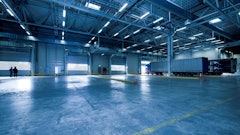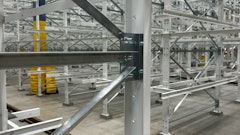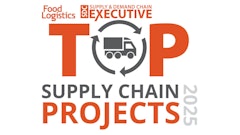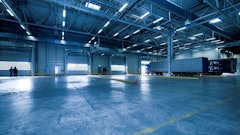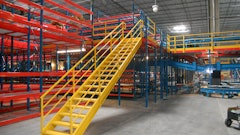
The construction industry has faced an onslaught in the past decade. Skilled labor is hard to find, with fewer and fewer young people pursuing careers in general construction, framing, electrical and plumbing. Couple that with soaring costs, not just personnel, but materials, and a pandemic, resulted in the loss of more than half a million U.S. construction jobs since February 2020 alone. All of these factors have forced businesses to find a new normal, and adopt new ways for the employees that remain to interact on a job site.
But, this New Normal delivered dramatic results, including faster design to opening timelines, major reduction in on-site time, reduction in first costs, fewer trucks required at each site and a stunning drop in labor needs.
The New Normal for construction
Today’s unemployed carpenter, plumber, electrician, framer or procurement manager is already part of an antiquated process, and for them, a new top priority is emerging. Finding a safer job, mitigating risk from injury or the Coronavirus disease (COVID-19) infection, and securing a consistent workday is critical. With an industrialized construction (IC) approach to design, manufacture and build, that new job could just well be in a factory.
As the pandemic took hold, lumber yard and steel mill output slowed, hitting the industry hard. Now, while construction output is high, companies are forced to navigate not just the normal fluctuation in costs for lumber, roofing and decking, but limited to non-existent materials availability. This double whammy made the supply chain nearly impossible to manage effectively using the traditional, mostly manual, approach.
IC is unlike traditional construction, instead using a factory-like approach, with an emphasis on leveraging manufacturing knowledge, to component development. Core to IC is software technology that enables repeatability, from design to manufacture and assembly, resulting in better quality control, a safer worksite and less labor.
Another component of construction that is positively impacted by the implementation of IC is the supply chain. However, the current, and traditional, approach to its management must change. With demand for built space not slowing, even with the pandemic, the lack of technology integration is preventing any kind of automation or efficiencies. Just two years ago, an article in the Harvard Business Review forecast the lack of end-to-end transparency was thwarted by the limitations of legacy technology.
Implementing materials requirement planning into the supply chain
In the construction industry, if you want your project built, you’ll pay what your local GC charges. It’s not unusual to see a 50-60% increase in materials cost, which is difficult to manage using a “project-by-project” approach.
Adopting an IC approach provides a way to normalize the cyclical nature of the industry – work is being done in a factory setting, it’s not people in trucks heading to a job site. In a factory, the goal is to keep the factory full, so bidding out projects is constant. And, with that, the supply chain becomes more critical, but also more manageable. In the auto industry, factories don’t suddenly run out of glass, because supply chain managers are conducting extensive materials requirement planning (MRP) to support not just the cars in the factory today, but the cars and trucks they will be building a year from now. This means costs can be maintained, especially when purchasing happens at times when prices are low – essentially eliminating price escalation.
Supply chain management is critical, and in an IC environment, it’s superior. By being able to leverage a manufacturing approach to materials planning, buying bulk materials for multiple jobs, when prices are low. As well, with IC, more of the building components are viewed as a product that will be manufactured to specifications in an industrialized setting, which allows supply chain managers to act more like a stock trader than a trade shop general contractor. By analyzing a factory’s manufacturing levels, it’s much easier to manage purchasing.
QSR adopts industrialized construction
In the middle of building 100 new outlets across the United States, a quick-serve restaurant (QSR) outlet realized a new approach was critical. For example, a big part of a corporate build program is lumber, but lumber is not easy to store or ship around the country efficiently, so buying and storing enough material to build 100 outlets wasn’t feasible, especially when those sites crisscross the United States.
Instead of planning for the job in front of them, they planned for jobs over the coming quarter or six months. Instead of having to secure lumber for 20 buildings in the middle of summer, when prices are the highest, bulk orders of wood were purchased and stored at the factory, and used as each new project was ready to go.
Using an IC approach, the company acted more like a manufacturing materials planner, or even like a commodities trader vs. a contractor, monitoring prices as they rise and fall, purchasing materials at their lowest, storing them in the factory and using the materials when the next restaurant was being started. And, it’s not just lumber, it’s a multitude of other materials – steel, electrical, plumbing and glazing supplies.
The IC approach to building requires a multi-trade effort – bringing skilled laborers into the factory – where they assemble utility integrated walls, including glazing and finishes, before being shipped to the job site. Without risks such as weather, security and worker safety, this process can be streamlined, resulting in a better client experience, reduced costs and fewer errors and delays.
In order to act like a supply chain trader, technology, as in any industrialized approach, is critical. As noted in the HBR article, new technologies are disruptive and will redefine supply chain management, ultimately requiring very little human intervention. The combination of increased flexibility in purchasing timeframes and factory storage, the automation of purchasing tasks, and the addition of predictive analytics aiding in the what, how much and when decisions are all part of IC.
The technology platform that aids in all of this will eventually integrate every aspect of construction – from design to manufacture to build. By using technology, data and processes can be integrated to enable a seamless, end-to-end IC workflow. This type of platform will allow changes to be captured and shared across the line in real time. Everything will be designed to deliver automated orders, including bill of materials and fabrication drawings.
Looking back to the major fast food outlet, managing regional construction teams across the nation, forecasting product needs and managing delivery had been nearly impossible. Local trusted contractors were retiring and new, reliable help was hard to find. Materials shortages brought things to a near standstill, and even when production began again, the backlog was immense. However, because the company had migrated to an Industrialized approach to their corporate build program, they were able to buy materials for projects four to six months in advance, something a typical general contractor can’t do. Materials were stored in the factory where they were manufactured and then delivered, just in time, to each site.
Adopting this approach delivered dramatic impacts, including 50% faster design to opening timeline, on-site time cut in half and a 10% reduction in first costs. The number of trucks required to each site was reduced by 20%, while framing and glazing labor dropped by 80%.
This inherent improvement in planning allowed the supply chain to plan for, and even out, fluctuations to be in a position to buy at the optimal time without worrying about shelf life or storage. Now imagine automation playing a role in determining what and when to buy while also predicting how market trends will affect price.
In addition, IC allowed the outlet to manage architectural and engineering costs, deliver repeatability with design and engineering costs and implement a process-based quality control system by using a system for deployment on a national scale. At the same time, labor costs were managed with factory-based manufacturing, coupled with bulk, uniform purchasing power. All of this meant project schedules were dependable, due to upfront planning, and on time openings were consistent and reliable.
Supply chain management, particularly in an IC environment, must shift their focus toward leveraging data and digital tools to allow them to effectively forecast materials needs in a reliable, cost-effective manner.
















